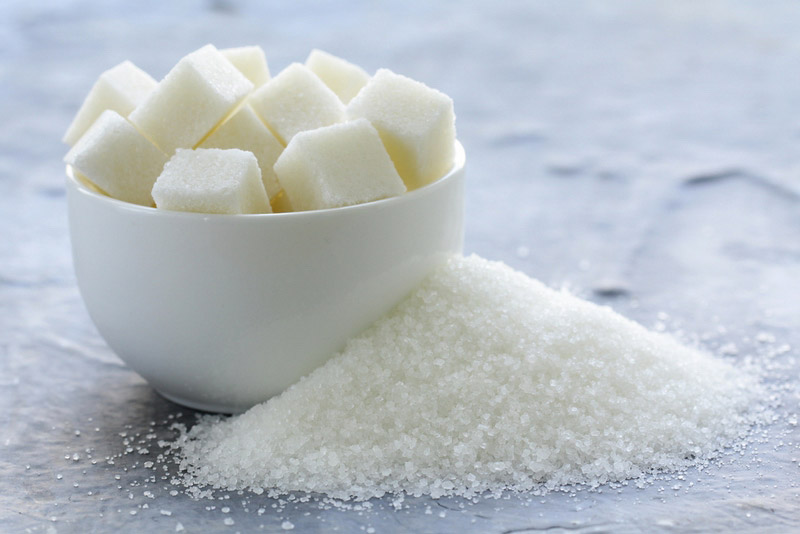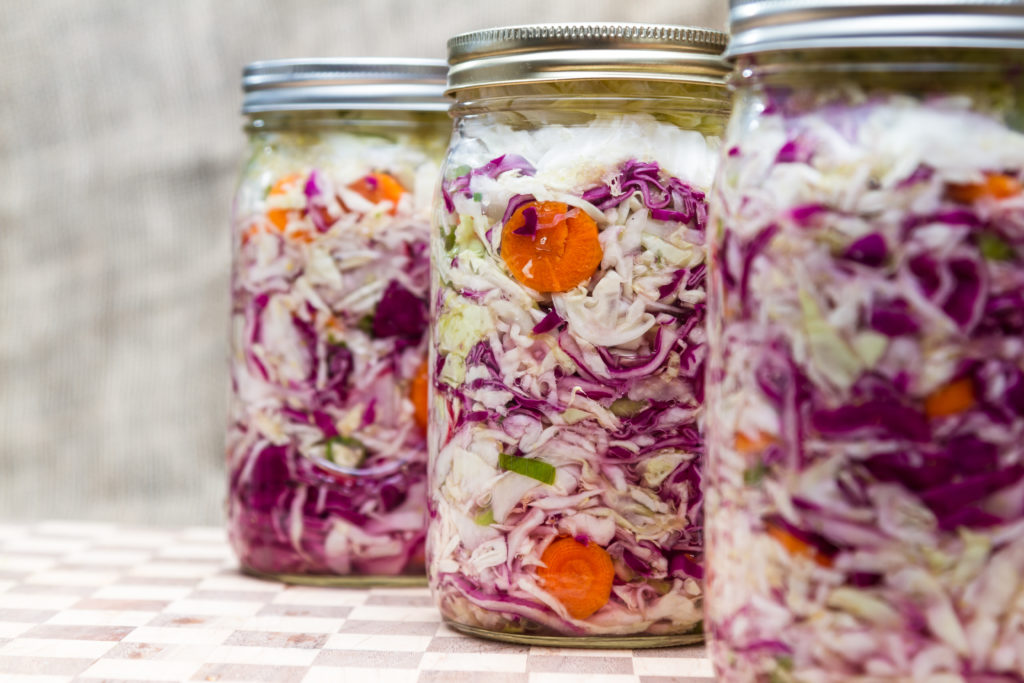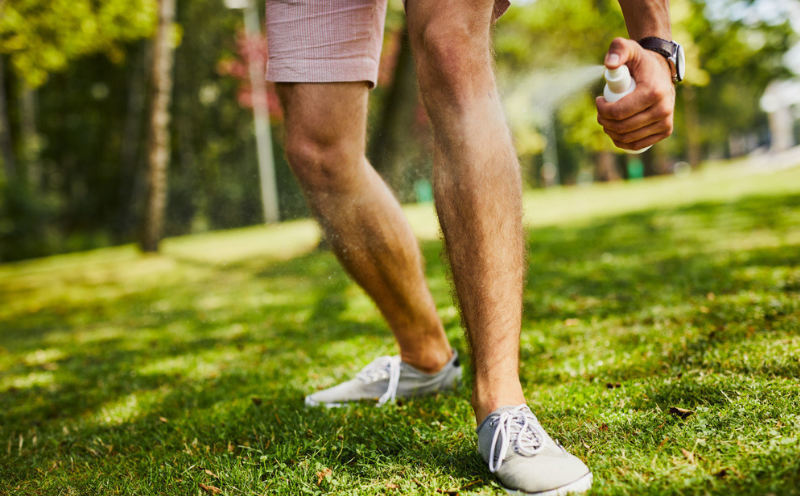Why It’s So Hard to Diagnose Lyme Disease + 4 Natural Ways to Ease Symptoms

Lyme disease is the most common tick-borne disease in the United States. A bacterial infection, it’s primarily transmitted by deer ticks (Ixodes ticks) as well as black-legged ticks.
It’s caused by a corkscrew-shaped bacteria, called Borrelia burgdorferi. These tiny critters are found in grassy and heavily wooded areas.
While commonly found on the East Coast, Lyme disease is found in more than 60 countries, as well as on the West Coast. (1) People who live in the coastal northeast, northwest California, and the Great Lakes region are at highest risk.
The Center for Disease Control and Prevention (CDC) estimates roughly 300,000 people are diagnosed with Lyme disease in the U.S. each year. However, diagnosing Lyme is difficult. Many people with Lyme are often misdiagnosed with other conditions, like chronic fatigue syndrome, MS and fibromyalgia. Lyme disease is often referred to as “the great imitator” because its symptoms can mimic so many other diseases.
It’s most common in children, older adults and those spending a great deal of time outdoors. (2) Most people get Lyme from a tick that is about the size of a poppy seed, and since their bite (and the actual tick itself) is so tiny and painless, many people don’t even realize they have been bitten.
Symptoms of Lyme Disease

When a person is bitten by a Lyme-carrying tick, the tick feeds for roughly 36 hours and transmits the bacteria Borrelia burgdorferi.
Each stage of transmission features specific symptoms, such as fevers and flu-like symptoms, fatigue, headache, myalgia, sore muscles, skin rashes and migraines. In the following days and weeks, people with Lyme might experience neurologic, musculoskeletal, or cardiovascular symptoms. They may also experience intermittent swelling and joint pain, especially in the knees.
Lyme disease is typically diagnosed on a variety of factors, including skin rash, physical symptoms and sometimes laboratory testing. (3, 4) Being misdiagnosed with other diseases can delay the proper diagnosis, treatment and recovery plan. You can use this handy Lyme disease checklist if you feel you might have become infected.
Diet, Lifestyle and Lyme Disease
Healing from Lyme disease can be a long road, especially if you have been misdiagnosed. A preventative approach towards recovery can be effective. Nutrition and lifestyle are key to strengthening your health, which includes supporting your immune system and supporting your body’s detox pathways.
Lyme disease can spread to and affect any part of the body, so a full-body treatment plan is best. Inflammation is responsible for a whole gamut of health-related symptoms, so it’s no surprise that an anti-inflammatory diet and lifestyle is the best approach to dealing with Lyme.
Keeping your immune system strong, eating the right foods and taking a holistic approach towards Lyme can help mitigate some your symptoms, as well as speed up your healing journey.
If Lyme disease is not diagnosed and treated early, it can develop into a chronic condition, leaving you and your health feeling less than optimal.
Also, consider Post Lyme Disease Syndrome (PLDS). This syndrome is how doctors refer to Lyme once it becomes chronic and continues to cause ongoing symptoms. (5) Keeping your immune system strong, eating the right foods and taking a holistic approach towards Lyme can help mitigate some your symptoms, as well as speed up your healing journey.
4 Natural Ways to Ease Lyme Disease Symptoms
1. Avoid Sugar

While bacteria loves to dine on sugar, Lyme-causing bacteria in particular love sugar. Various sugars suppress your immune system—which is essential to keep in tip-top shape when dealing with Lyme. This causes more inflammation throughout your body.
Sugar can impact your white blood cells by competing for space with vitamin C, a potent immune-supporting antioxidant, as well reduce the production of lymphocytes. (6)
Remove processed sugars from your diet immediately, and don’t forget to remove hidden sugars as well. These might be lurking in your gluten-free goodies, sauces and salad dressings and even some of your Paleo-friendly foods. Think protein bars or anything with a label and ingredient list.
Eating sugar can cause yeast overgrowth, particularly in the GI system. This can be problematic to overall immunity, as up to 90 percent of the antibodies used to fight infections are produced in the gut.
While you are removing pro-inflammatory foods, be sure to reduce your intake of dairy, gluten, soy and corn, as these foods cause issues for the immune system.
2. Fill Up On Greens

Support whole-body health by feeding your body and cells with dark leafy greens. Nourish your body with folate-rich greens (and B vitamins in general) and you’ll help reduce levels of homocysteine, a marker of overall body inflammation.
Folate is important for recycling homocysteine into methionine, an essential amino acid that assists in breaking down fat, as well increasing the production of glutathione, one of our body’s most potent antioxidants.
Eating folate-rich foods can support methylation, a biochemical process that occurs billions of times per second in your cells. It contributes to over 200 biochemical reactions which include immune health, liver detoxification and gene expression. (7)
3. Take Care of Your Gut

When it comes to overall health, it’s important to balance “good” bacteria with the “bad”. Roughly 80 percent of your immune system is located in your digestive system. So if your digestive system is crawling with unhealthy bacteria, there’s a good chance your immune system will be suppressed as a result.
Consuming too much sugar feeds the “bad” bacteria rather than promoting the “good,” disease-preventing bacteria. Limit your intake of sugar and grains, while eating plenty of probiotic-rich foods like kimchi, sauerkraut, and kombucha.
If you choose to supplement with a probiotic, look for a good balance of the lactobacillus and bifidobacterium strains. Lactobacillus probiotics help produce lactic acid and create an acidic environment in the digestive tract. This prevents the growth of pathogenic microorganisms that enjoy living in an alkaline environment. Bifidobacterium helps prevent the growth of harmful bacteria as well as yeast. (8)
4. Boost Your Vitamin D

Vitamin D is a key player in overall immunity, as vitamin D influences nearly 3,000 different genes in your body. Receptors that respond to the vitamin are found in almost every type of human cell, from your brain to your bones. Vitamin D up-regulates your ability to fight infections as well as chronic inflammation. It produces over 200 antimicrobial peptides and is effective against colds, influenza and general infections.
When you expose your skin to the sun, your skin synthesizes high amounts of cholesterol sulfate, which is important for immunity and cell health. When exposed to sunshine, your skin also synthesizes vitamin D3 sulfate. This form of vitamin D is water-soluble, unlike oral vitamin D3 supplements, which are unsulfated. The water-soluble form travels freely in your bloodstream, whereas the unsulfated form needs LDL (also known as “bad cholesterol”) for transport.
Aim to expose 70 percent of your body for a good 20 minutes a day without any sunscreen to enhance your body’s ability to make its own vitamin D. (9)
Preventing Tick Bites

Don’t let lyme disease scare you off from the outdoors. Get outside, explore and wander, but be smart about it! Be sure to wear long pants, long sleeves and long socks to keep ticks off your skin when you’re hiking, working outdoors and/or in an area where ticks are common. Make sure you check your skin as soon as you get back inside. Think about wearing light-colored clothing so you can spot ticks more easily.
Be sure to use a bug spray or insect repellent when you’re out and about in nature. For a natural repellent, mix ½ cup witch hazel with ½ cup apple cider vinegar, then add 30 drops of your favorite essential oil (try lemongrass, citronella or rosemary). Combine all of the ingredients into a glass spray bottle. Spray all over your body before you embark on your next adventure. Note, if you’re entering an area heavily populated with ticks, you’ll definitely want stronger insect repellent. Make sure to talk to your doctor about the safest methods.
(Read This Next: 9 Leaky Gut Symptoms and How to Start Healing Now)
The post Why It’s So Hard to Diagnose Lyme Disease + 4 Natural Ways to Ease Symptoms appeared first on PaleoPlan.
from PaleoPlan https://ift.tt/2QmLe4P
Entry Published : October 01, 2018 at 12:19PM
EntryContent :

Lyme disease is the most common tick-borne disease in the United States. A bacterial infection, it’s primarily transmitted by deer ticks (Ixodes ticks) as well as black-legged ticks.
It’s caused by a corkscrew-shaped bacteria, called Borrelia burgdorferi. These tiny critters are found in grassy and heavily wooded areas.
While commonly found on the East Coast, Lyme disease is found in more than 60 countries, as well as on the West Coast. (1) People who live in the coastal northeast, northwest California, and the Great Lakes region are at highest risk.
The Center for Disease Control and Prevention (CDC) estimates roughly 300,000 people are diagnosed with Lyme disease in the U.S. each year. However, diagnosing Lyme is difficult. Many people with Lyme are often misdiagnosed with other conditions, like chronic fatigue syndrome, MS and fibromyalgia. Lyme disease is often referred to as “the great imitator” because its symptoms can mimic so many other diseases.
It’s most common in children, older adults and those spending a great deal of time outdoors. (2) Most people get Lyme from a tick that is about the size of a poppy seed, and since their bite (and the actual tick itself) is so tiny and painless, many people don’t even realize they have been bitten.
Symptoms of Lyme Disease

When a person is bitten by a Lyme-carrying tick, the tick feeds for roughly 36 hours and transmits the bacteria Borrelia burgdorferi.
Each stage of transmission features specific symptoms, such as fevers and flu-like symptoms, fatigue, headache, myalgia, sore muscles, skin rashes and migraines. In the following days and weeks, people with Lyme might experience neurologic, musculoskeletal, or cardiovascular symptoms. They may also experience intermittent swelling and joint pain, especially in the knees.
Lyme disease is typically diagnosed on a variety of factors, including skin rash, physical symptoms and sometimes laboratory testing. (3, 4) Being misdiagnosed with other diseases can delay the proper diagnosis, treatment and recovery plan. You can use this handy Lyme disease checklist if you feel you might have become infected.
Diet, Lifestyle and Lyme Disease
Healing from Lyme disease can be a long road, especially if you have been misdiagnosed. A preventative approach towards recovery can be effective. Nutrition and lifestyle are key to strengthening your health, which includes supporting your immune system and supporting your body’s detox pathways.
Lyme disease can spread to and affect any part of the body, so a full-body treatment plan is best. Inflammation is responsible for a whole gamut of health-related symptoms, so it’s no surprise that an anti-inflammatory diet and lifestyle is the best approach to dealing with Lyme.
Keeping your immune system strong, eating the right foods and taking a holistic approach towards Lyme can help mitigate some your symptoms, as well as speed up your healing journey.
If Lyme disease is not diagnosed and treated early, it can develop into a chronic condition, leaving you and your health feeling less than optimal.
Also, consider Post Lyme Disease Syndrome (PLDS). This syndrome is how doctors refer to Lyme once it becomes chronic and continues to cause ongoing symptoms. (5) Keeping your immune system strong, eating the right foods and taking a holistic approach towards Lyme can help mitigate some your symptoms, as well as speed up your healing journey.
4 Natural Ways to Ease Lyme Disease Symptoms
1. Avoid Sugar

While bacteria loves to dine on sugar, Lyme-causing bacteria in particular love sugar. Various sugars suppress your immune system—which is essential to keep in tip-top shape when dealing with Lyme. This causes more inflammation throughout your body.
Sugar can impact your white blood cells by competing for space with vitamin C, a potent immune-supporting antioxidant, as well reduce the production of lymphocytes. (6)
Remove processed sugars from your diet immediately, and don’t forget to remove hidden sugars as well. These might be lurking in your gluten-free goodies, sauces and salad dressings and even some of your Paleo-friendly foods. Think protein bars or anything with a label and ingredient list.
Eating sugar can cause yeast overgrowth, particularly in the GI system. This can be problematic to overall immunity, as up to 90 percent of the antibodies used to fight infections are produced in the gut.
While you are removing pro-inflammatory foods, be sure to reduce your intake of dairy, gluten, soy and corn, as these foods cause issues for the immune system.
2. Fill Up On Greens

Support whole-body health by feeding your body and cells with dark leafy greens. Nourish your body with folate-rich greens (and B vitamins in general) and you’ll help reduce levels of homocysteine, a marker of overall body inflammation.
Folate is important for recycling homocysteine into methionine, an essential amino acid that assists in breaking down fat, as well increasing the production of glutathione, one of our body’s most potent antioxidants.
Eating folate-rich foods can support methylation, a biochemical process that occurs billions of times per second in your cells. It contributes to over 200 biochemical reactions which include immune health, liver detoxification and gene expression. (7)
3. Take Care of Your Gut

When it comes to overall health, it’s important to balance “good” bacteria with the “bad”. Roughly 80 percent of your immune system is located in your digestive system. So if your digestive system is crawling with unhealthy bacteria, there’s a good chance your immune system will be suppressed as a result.
Consuming too much sugar feeds the “bad” bacteria rather than promoting the “good,” disease-preventing bacteria. Limit your intake of sugar and grains, while eating plenty of probiotic-rich foods like kimchi, sauerkraut, and kombucha.
If you choose to supplement with a probiotic, look for a good balance of the lactobacillus and bifidobacterium strains. Lactobacillus probiotics help produce lactic acid and create an acidic environment in the digestive tract. This prevents the growth of pathogenic microorganisms that enjoy living in an alkaline environment. Bifidobacterium helps prevent the growth of harmful bacteria as well as yeast. (8)
4. Boost Your Vitamin D

Vitamin D is a key player in overall immunity, as vitamin D influences nearly 3,000 different genes in your body. Receptors that respond to the vitamin are found in almost every type of human cell, from your brain to your bones. Vitamin D up-regulates your ability to fight infections as well as chronic inflammation. It produces over 200 antimicrobial peptides and is effective against colds, influenza and general infections.
When you expose your skin to the sun, your skin synthesizes high amounts of cholesterol sulfate, which is important for immunity and cell health. When exposed to sunshine, your skin also synthesizes vitamin D3 sulfate. This form of vitamin D is water-soluble, unlike oral vitamin D3 supplements, which are unsulfated. The water-soluble form travels freely in your bloodstream, whereas the unsulfated form needs LDL (also known as “bad cholesterol”) for transport.
Aim to expose 70 percent of your body for a good 20 minutes a day without any sunscreen to enhance your body’s ability to make its own vitamin D. (9)
Preventing Tick Bites

Don’t let lyme disease scare you off from the outdoors. Get outside, explore and wander, but be smart about it! Be sure to wear long pants, long sleeves and long socks to keep ticks off your skin when you’re hiking, working outdoors and/or in an area where ticks are common. Make sure you check your skin as soon as you get back inside. Think about wearing light-colored clothing so you can spot ticks more easily.
Be sure to use a bug spray or insect repellent when you’re out and about in nature. For a natural repellent, mix ½ cup witch hazel with ½ cup apple cider vinegar, then add 30 drops of your favorite essential oil (try lemongrass, citronella or rosemary). Combine all of the ingredients into a glass spray bottle. Spray all over your body before you embark on your next adventure. Note, if you’re entering an area heavily populated with ticks, you’ll definitely want stronger insect repellent. Make sure to talk to your doctor about the safest methods.
(Read This Next: 9 Leaky Gut Symptoms and How to Start Healing Now)
The post Why It’s So Hard to Diagnose Lyme Disease + 4 Natural Ways to Ease Symptoms appeared first on PaleoPlan.
via IFTTT
No comments: